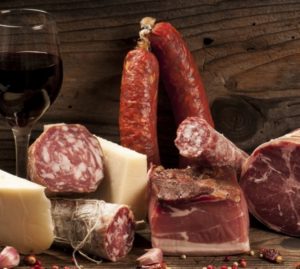Though many Americans may be put off by the thought of eating food that’s made with blood, it is nonetheless becoming an increasingly common part of the U.S. culinary scene. The fluid acts as a thickener, adding rich flavor and deep color to a wide range of dishes. Students in culinary academy should take note of the growing acceptance of blood and consider how the ingredient could contribute to their own recipes.
Blood in traditional cuisines
Blood may seem a novel ingredient to some diners, but for others it is just a reminder of grandma’s cooking. Drawn from an array of different animals, the fluid is an essential part of traditional dishes in many cultures.
Serious Eats pointed out that chicken and duck blood soup, made with tender slices of congealed poultry blood, is a dish commonly eaten in Shanghai. Real Epicurean offered a recipe for the Polish duck blood soup called czarina, which includes various other pieces of the duck as well as cloves and dried fruit. Northern Thai cuisine uses pig’s blood in dishes like laap meuang, which is a minced pork salad.
Blood sausages are part of many culinary heritages, including the Spanish morcilla, French boudin noir and British black pudding. A recipe for authentic Irish black pudding posted on Epicurious required 4 cups of fresh pig’s blood, along with oatmeal and pork fat. This style of blood sausage is most familiar as part of a full breakfast, but it may also be added to salads and other dishes.
Nordic Food Lab’s Elisabeth Paul, an expert on traditional culinary uses of blood, discussed with Good magazine why the fluid fell out of favor in modern kitchens.
“Traditionally the blood was the first thing that you got from the pig,” Paul said. “As soon as people got out of home slaughter and it got industrialized, you didn’t have the direct contact with this byproduct anymore. The abundance of blood recipes you had because you wanted to use the whole animal declined.”
Blood on U.S. menus
Blood may not be a universally accepted part of the dining mainstream in the U.S.quite yet. However, some chefs have been successful in distinguishing themselves by not being squeamish about the red stuff.
According to Bon Appetit, chefs at many prestigious restaurants have employed blood in their recipes. Jamie Bissonnette of Toro in Boston and New York City crafted a dish called morcilla de cordero, a shepherd’s pie featuring sausage made with lamb blood, Brussels sprouts, apples and hot sheep’s milk cheese. Originating in Portland, Ore., chef Andy Ricker’s Pok Pok has expanded to locations in New York and Los Angeles by boasting a menu based on Southeast Asian street food heavy on the use of pig’s blood.
In addition to showing an interest in tradition and a desire to find unique flavors, some chefs include blood in their culinary repertoire as ia matter of principle. Those who believe in an ethical imperative to use as much of an animal as possible realize they should avoid letting blood go to waste. The Globe and Mail reported on chefs like Toronto’s Rob Gentile, who found a use for the pig’s blood he conserved by rediscovering an Italian recipe called torta di sanguinaccio. This tart includes fresh figs steeped in grappa and espresso, buffalo milk creme anglaise, candied almonds and a custard made from dark chocolate and blood.
Whether your own cooking draws more on Old World traditions or experimental new ideas, you too may wish to try incorporating blood into your dishes. While not for the faint of heart, trying out this distinctive ingredient could give your food an exciting edge.





